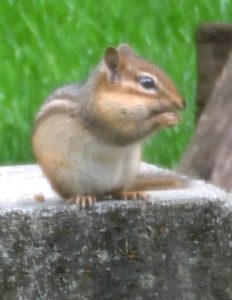
In each monograph to the left, I have selected one species within a genus to detail. But I have also listed all the species in Virginia for that genus and I have indicated whether the species is endangered or threatened in Virginia or in any state (as of 2015). Foragers can hopefully avoid collecting endangered plant species by educating themselves to which endangered plants exist in their local areas and by taking pains to double check their identification. A sample listing looks like this:
Common name |
Virginia Viola Species |
Origin |
Rare Plant Status |
| prairie violet | V. pedatifolia | native | Globally secure, but critically imperiled in Virginia |
| dog-violet | V. labradorica | native | rare in some states (not Virginia) |
| sweet violet | V. odorata | non-native | not rare |
If the far right column indicates that a plant is “Rare in some states (not Virginia)”, you are encouraged to do some additional research for your state. You can do this through the following website at the U.S. Dept. of Agriculture.
At the U.S. Dept. of Ag website above, under the state search window , enter in the name of the plant in question. Click the check box by your state name. Then scroll to the bottom and click “Display results.” You should see the U.S. map for that plant and your state should be colored in if the plant is in your state. Zoom in on to your state by right clicking on your state, then scrolling in with the wheel on your mouse— indicating which counties the plant can be found in.
The below G and S codes are for the rare plant status of the plants in this website’s monographs. You’ll see that a plant may be globally secure yet imperiled in Virginia, meaning that the plant is abundant somewhere, but very rare in Virginia. By comparing global and state ranks, you can assess the urgency of conservation needs. You may run into these codes as you research in other states.
GLOBAL Status
G1= Critically imperiled— at very high risk of extinction globally
G2= Imperiled— high risk of extinction globally
G3= Vulnerable— moderate risk of extinction globally
G4= Appears secure— uncommon, but not rare globally. Concern for the long-run.
G5= Secure—common, widespread and abundant globally
STATE Status
S1= Critically imperiled— at very high risk of extirpation in Virginia
S2= Imperiled— high risk of extirpation in Virginia
S3= Vulnerable— moderate risk of extirpation in Virginia
S4= Appears secure— uncommon, but not rare. Concern for the long-run in Virginia
S5= Secure—common, widespread and abundant in Virginia
SH= May already be extirpated from the state, some hope of still finding a population in Virginia
Reference:
Townsend, J. F. (2015, April) Rare Plants Natural Heritage Technical Report 15-10. (Unpublished Report) Richmond, Virginia: Virginia Department of Conservation and Recreation, Division of Natural Heritage.

